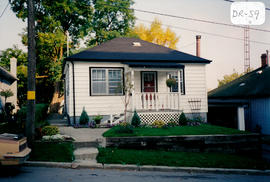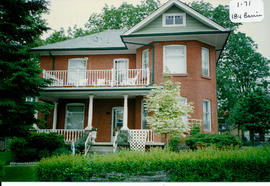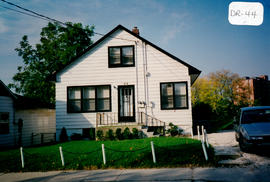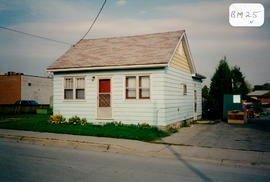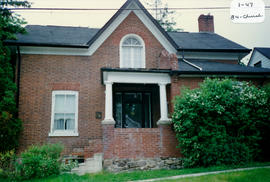Drury and Thomas Streets Parking Lot
- CA BWGPL GJ-HB-2017-03-21-02
- Item
- 1995-1996
Part of George Jackson fonds
Although currently being used as a parking lot, there was originally at least one house on this property located at the corner of Drury and Thomas Streets. George, Mell (Mel?), and Davey John had a one-storey, frame stucco house here. Margaret "Maggie" MacDonald was the housekeeper and cook for the family. George was a handyman. He worked for Jack Spencer and Ben Collings fleshing and marsh haying. Mell (Mel?) was a day worker, gardener, handyman, and wood cutter. Davey John was a machinist and bearing lead (?) specialist. He was also a noted storyteller. Behind the house was a woodshed, back porch, chicken run, and chicken house. There was a garden next to the fence of the Queen’s Hotel. There were sheds from the hotel along the west side of the property. Pigs were fed with slops from the hotel. There was a two-storey barn with a loft, horse stables, and car garage facing Elizabeth Street. The house later became the home of Frank Cook, son Norman, and mother (Olive Whiteside). He was a labourer, small truck driver (picking up garbage), and a gravel (grave?) digger. Len and Aida Gardner and family moved into the house years later. They then moved into an apartment when the house was demolished. (1, 2)
George Jackson


